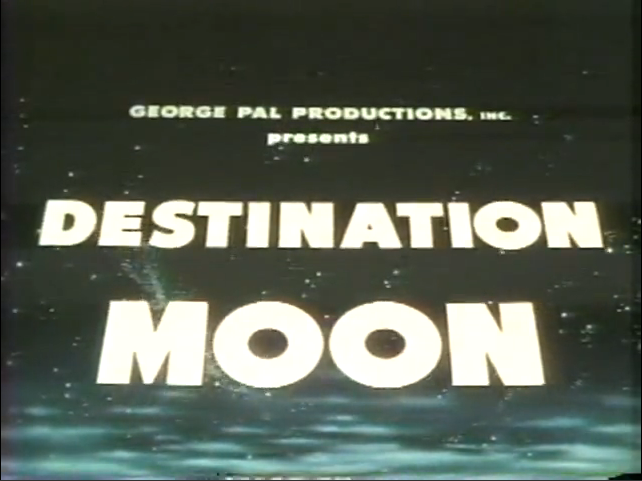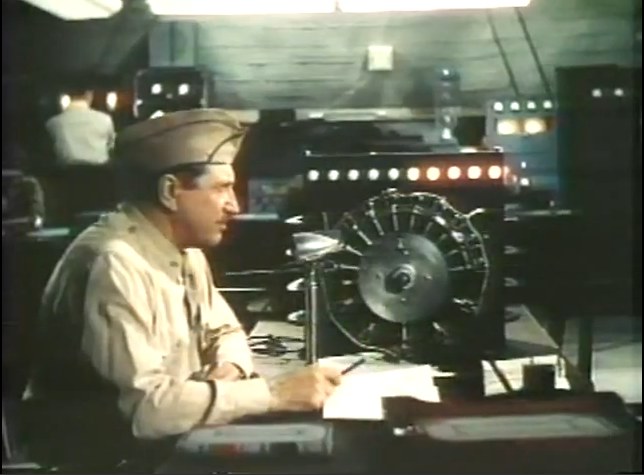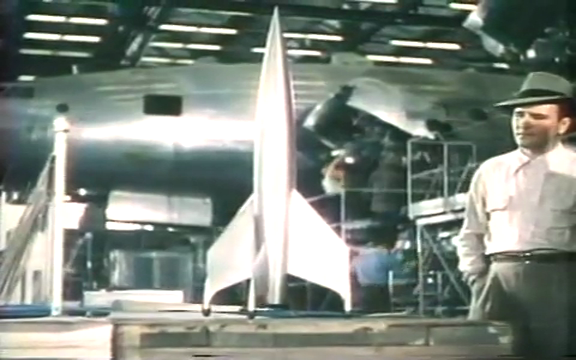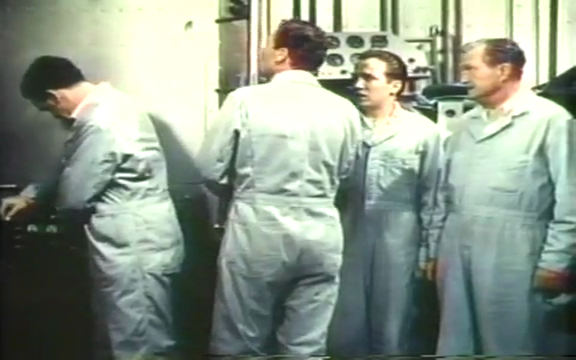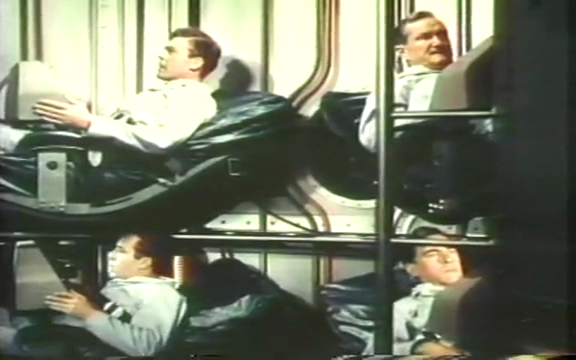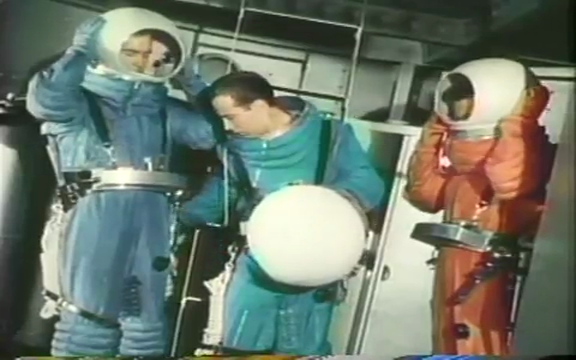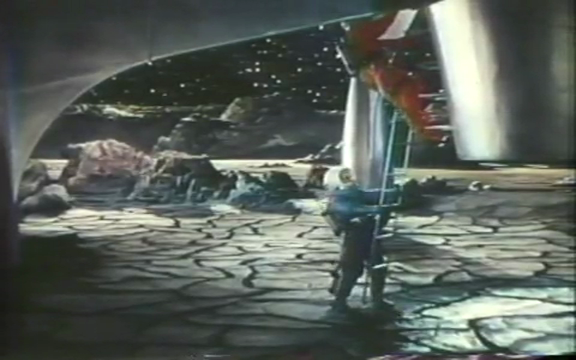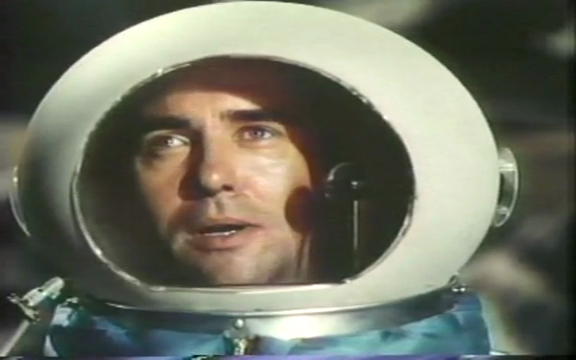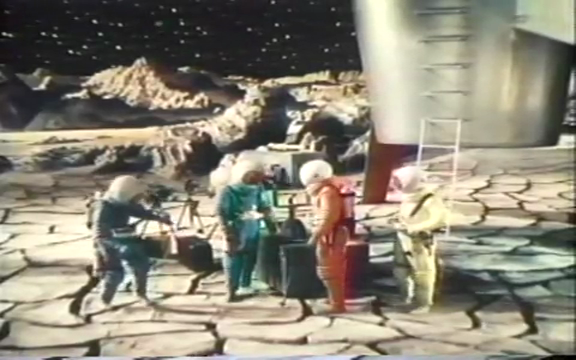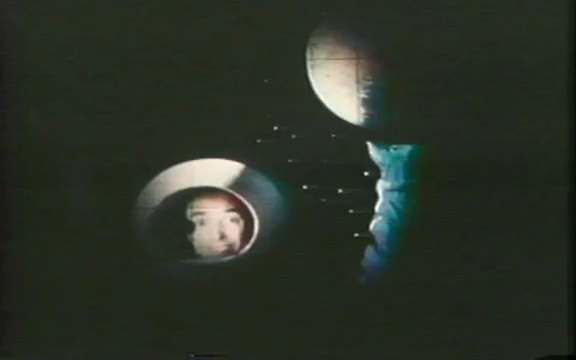-
#28 – Destination Moon (1950)
Destination Moon (1950)
Film review #28
Directors: Irving Pichel, Walter Lantz
The first science-fiction movie to be produced post WWII about a trip to the moon…
As the latest test launch of a V-2 rocket fails at a top secret launch site in America, government funding is pulled and rocket scientist Dr. Charles Cargraves, and General Thayer have to rethink their plans. They hire Jim Barnes to aid them in creating a rocket that can take them to the moon. They persuade a group of corporate American investors and captains of industry to fund the project. At first skeptical, Cargraves convinces them that they are not the only ones who want to get the moon, and that whoever can put missiles on the moon first will control the Earth…
Two years pass and the rocket is just about ready for takeoff. Fear has been building in the media that the rocket may cause a number of consequences to the public, including radiation, so Cargraves steps up the launch schedule to avoid giving the government time to stop them, since “There are no laws against launching a space rocket yet.” Cargraves, Thayer and Barnes are joined by Joe Sweeney, who handles the radio and communications equipment in the shuttle. He does not believe that the rocketship will work, and only agrees to join in just to prove this. While they are making final preparations, a government official tries to gain access to the launch site with a court order, banning the rocket from launching. Cargraves hears of this and quickly rallies his crew into the rocket and to take off before the official can reach them, feigning ignorance of why he is there.
As the rocket takes off, the crew experience the G-force from launching, and start to experience weightlessness. They take a pill to counteract the feeling of “spacesickness”, and take a look out of the window to see the Earth moving away in the distance, as Sweeney still can’t believe the rocketship worked, telling the others he wants to head back because the moon is just “something to look at”. While travelling through space, they find that one of the antennas has frozen, and they have to take a walk outside the shuttle to go and fix it. They very nearly lose a crewmember as he drifts off into space, but another crewmember uses an oxygen tank as a propulsion device to go and rescue him, and the four continue on their voyage to the moon.
Upon making a successful landing, the crew head out onto the surface, and Cargraves claims the moon “In the name of all mankind”. They then receive a transmission from Earth, and are interviewed for a broadcast to be sent all over the world. The team then splits up to research the different aspects of the moon. Cargreaves photographs Sweeney seemingly holding up with Earth, like a “Modern day Atlas”, and Thayer takes some mineralogical surveys, finding a large uranium deposit on the moon.
Back at the ship, Barnes is calculating the take off with Earth, and comes to a troubling conclusion: The rocketship is too heavy to take off and make it back to earth. He goes outside to report this to the other crewmembers, and they spend the next 24 hours stripping the ship to make it lighter. In the end, they are still 110 pounds too heavy, and they decide they have to leave someone behind, and decide to draw lots between Thayer, Cargraves and Barnes. Sweeney goes outside while they argue and decides to sacrifice himself. Cargraves then comes up with a plan to take out the radio and to close the airlock without someone having to do it manually, so they can throw out the last spacesuit, leaving the rocket light enough to take off from the moon and towards Earth. The film finishes with the phrase on screen: “This is the end…of the beginning”.
Destination Moon was the first movie to be put into production post WWII about space travel. It was not the first released however, as when it was delayed, Rocketship X-M was quickly produced and made in under three weeks to beat Destination Moon to release and ride the hype it had created (As I discussed in my Rocketship X-M review). Destination Moon is a slick and carefully considered movie about the prospects of space travel, and the movie tends to being as accurate as possible in terms of technology and science. For this reason, there are no robots, aliens, monsters or UFOs which dominated science-fiction at this time in the movie, but it is billed as a semi-documentary with regards to it’s execution. The plot and feels almost secondary to the science.
When this movie was released, the general public had very little idea what space travel would be like (The first man-made objects hadn’t even reached space yet), and the movie does it’s best to be informative and speculative at the same time. This is accomplished in a number of ways, firstly when Cargraves is trying to get the captains of industry to invest in the rocket, he shows them a Woody Woodpecker cartoon, which explains the whole concept of how the rocket works in this colourful and simple way not just to the investors, but to the audience too. Also the character of Joe Sweeney, played by a comedian acts as the “everyman” aboard the crew, with the rest being scientists or experts in their field. He is perhaps the most relateable character, with his distinct Brooklyn accent and his lack of knowledge about space travel, the other crewmembers have to explain to him what is happening throughout the journey, and the audience learns what is happening along with him. The speculative nature of the film reminds me very much of Contact, which itself is about the “What-ifs?” about first contact with extraterrestrial intelligence.
When this movie was released, it was billed as a high budget production. Just the fact that it was released in colour in 1950, when very few films were, is a testament to this. Though expensive and accurate in it’s time, nowadays it looks very much out of date. The moon set is a large 13ft matte-painted landscape, with holes cut out and light shined through them to create stars. This was an often practiced technique at the time, but nowadays looks rather crude. Since we have now put man on the moon unlike when this film was made, we can see that the film comes somewhat close to capturing the bleakness of the lunar landscape, but not close enough when compared to actual photographs taken from the moon, and our suspension of disbelief when looking back at this film cannot be maintained.
Overall, I would say that Destination Moon was a pretty important film for it’s time. It attempted to accurately speculate what a trip to the moon would be like, without there being any successful attempt to get into space at the time. We can look back on it now and pick apart the discrepancies between this and actual space travel. It shows that space travel is both a fantastic adventure and a perilous one, supported by a story that has comedy, drama and speculation altogether makes it is a bit of cinematic history. It is a little bit of a departure from the “disaster” sci-fi movies of that era, where there was always a monster or alien race looking to wipe out the Earth, and it is perhaps a refreshing change: One of hope and prospect rather than the terror associated with scientific and technological advances as portrayed in other films of the same era. This departure makes it stand out from the others, and if you want to watch a movie from that era, it is worth your consideration, you might even learn a little something about space travel too.
